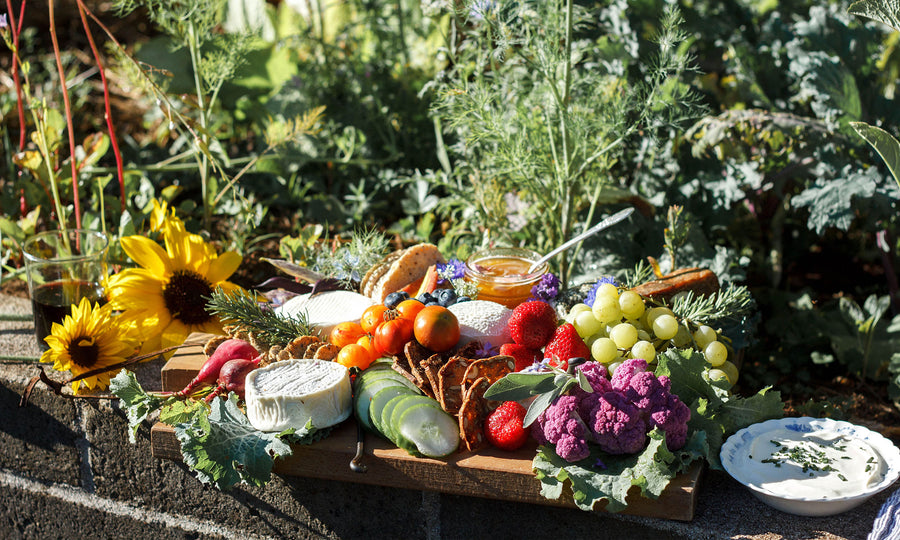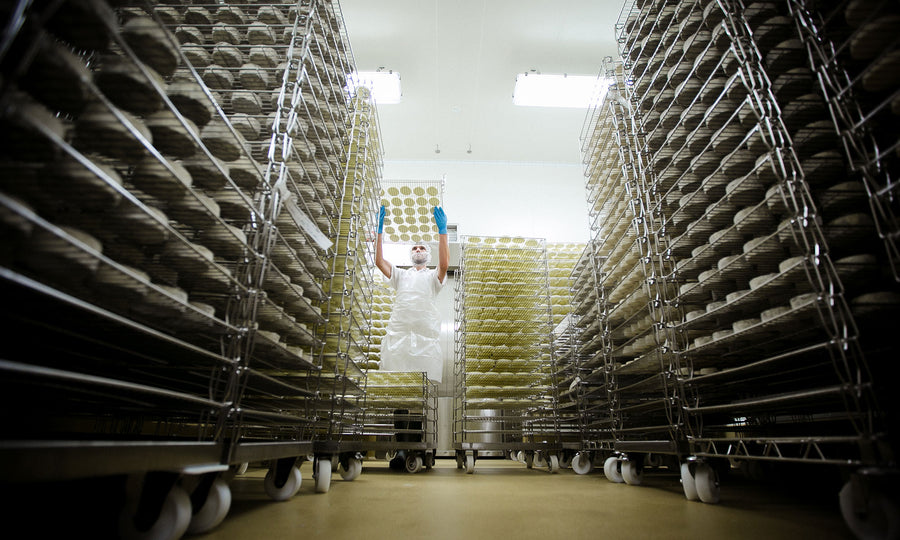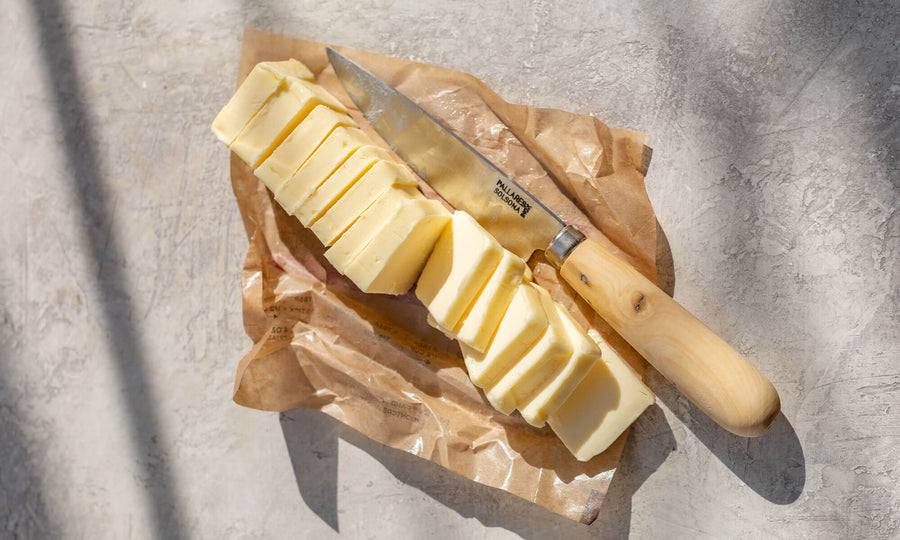Editor's note: In 2019, we decertified St. Albans from the non-GMO Project. The Stanley family still proudly produces high-quality cows' milk used to make a variety of Vermont Creamery products, including our cultured butter.
Now that we’ve all had a chance to try St. Albans, the deliciousness that is Vermont Creamery’s new cow’s milk-aged cheese, let’s dive into the process behind getting that tasty, wrinkly, melty and perfectly potent cheese into its crock and to store shelves near you!
The primary ingredient in all Vermont Creamery’s St. Albans is high-quality, Non-GMO milk from our farm. The cows that produce this milk consume four major components: water, forage grasses, legumes and grain. Can you guess which of them they consume in the largest percentage? Water! Cows drink about 50 gallons of water per day. Picture a bathtub filled to the brim – this comes out to be about 90 percent of her diet by weight. That’s a lot of water!
How about the other components?
Our hillside farm in Bakersfield is just 35 acres – none of which can be harvested the ‘conventional’ way with a tractor and mower. To feed our herd of Jersey cows, we use a practice called intensive rotational grazing. In this system, the cattle forage for their own food during the summer months, thriving on the juicy legume clover (the Vermont State Flower and part of Vermont Creamery’s logo) and grasses that grow naturally in the fields. Our land is divided into 30 paddocks and the girls are moved every 12 hours, so that they always have a new area to graze. Rotational grazing also gives the pastures a rest period, allowing the grasses to regrow between feedings.
The herd will return to the same patch of land about every two weeks. My parents established their homestead in a region that only enjoys about four months of grass growing weather. Because of the Vermont weather and our hilly pastures, our farm relies 100 percent on the purchase of dry hay to feed our herd during the winter months. This is essentially the same thing they are getting while grazing, but dried and baled.
That leaves one remaining dietary component… grain. About 25 percent of the dry matter our cows eat comes from Non-GMO grains; mainly a mixture of corn meal, wheat, barley and soybean meal in a pellet form.
Much like when you and I eat, all the different nutrients in our cows’ diet goes toward different functions to help them maintain their energy levels and make high quality, delicious milk. From our farm, the milk heads to Vermont Creamery where it continues the journey to becoming St. Albans.
Claire Stanley is a born-and-raised Vermonter hailing from Paul-Lin Dairy in Bakersfield. Here, Claire assists her parents in the daily operations of the farm where they milk 30 Jersey cows on a pasture based grazing system. When she’s not hanging with the Jersey Girls, Claire works as marketing director for a bovine genetics company, enjoys gardening, a good book, taking in the beauty of the Green Mountains she is lucky enough to call home, and, of course, indulging in delicious cheese.
We are all so excited about the opportunity Vermont Creamery has given to our little dairy…. And we will continue to put forward our utmost effort to provide the high quality milk needed to make St. Albans the tasty and enjoyable product it is!
Claire Stanley is a born-and-raised Vermonter hailing from Paul-Lin Dairy Farm in Bakersfield. Here, Claire assists her parents in the daily operations of the farm where they milk 30 Jersey cows on a pasture based grazing system. When she’s not hanging with the Jersey Girls, Claire works as marketing director for a bovine genetics company, enjoys gardening




